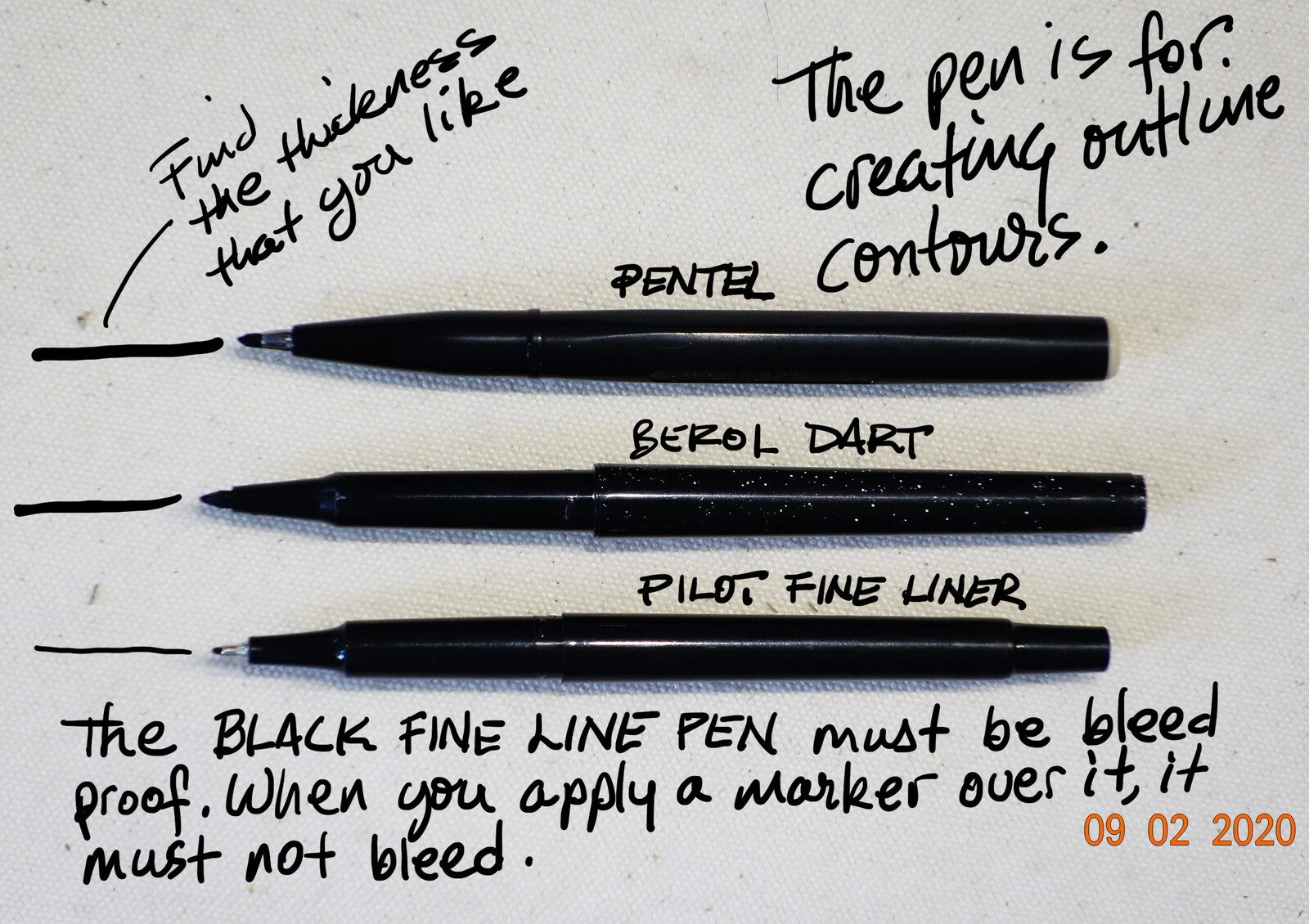Traditional Drawing 1 materials needed for the course.
NOTE: Materials are personal. Once you have materials that satisfy the criteria of the course, you should choose the materials that you love to work with. Different people love different things. Find the tools that work for you. The materials used to perform the required projects Drawing 1, Structural Geometry course are designed for speed, to enable the student to work FAST! Also the markers are very direct and unforgiving, exposing errors or failed attempts. This is desirable, because it reveals the mistakes. When we see repeated mistakes we can isolate them and begin correcting the patterns that lead to repeating the same mistakes. Drawing 1 is focused on developing an understanding of structural wire frame drawing to scale and appling 3d form through the use of 6 different tonal values: 1. Highlights 2. Light 3. Shadow 4. Core shadow 5. Cast shadow 6. bounced light.
Live Demo of how to blend markers and the various materials you can use to enrich your drawings.
How to blend markers.
How to blend markers.











